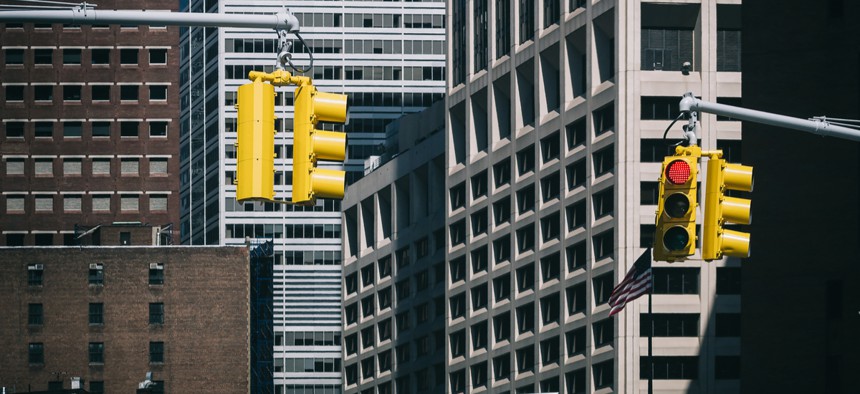Crash Fatalities Increase as Cities Stop Using Red-Light Cameras

The total number of camera programs declined from 2012, despite new programs being added. Shutterstock

Connecting state and local government leaders
Fewer red-light cameras are not the sole reason for the uptick, but the decline is a factor, report finds.
More people are dying in crashes involving cars running red lights as fewer cities use red-light cameras to enforce traffic laws, according to a recent study from the nonprofit Insurance Institute for Highway Safety.
More than 800 people died in crashes involving cars running red lights in 2016, an increase of 17 percent from 2012, according to the analysis, released this week. Meanwhile, 421 communities nationwide had red-light camera programs as of this month, down from 533 in 2012.
“Although new camera programs continue to be added, the total number of camera programs declined,” the report says. “Commonly cited reasons for turning off cameras include a reduction in camera citations, difficulty sustaining the financial viability of the program and community opposition.”
The study suggests that fewer red-light camera programs are not the sole reason for the increase—other factors, including economic recovery, likely play a role—but that the decline does contribute to the uptick.
To investigate the correlation, researchers compared trends in annual crash rates in 14 cities that ended their camera programs between 2010 and 2014 with trends in 29 similar cities with ongoing camera programs.
“The fatal red-light-running crash rate was 30 percent higher in cities that turned off cameras,” the study concludes. “The rate of all fatal crashes at signalized intersections was 16 percent higher.”
Surveys have shown that most residents in cities with camera programs support their use, but that support can disappear when programs are poorly run or perceived to be based on generating revenue from tickets rather than on preventing crashes.
To avoid that, and to encourage cities and municipalities to continue to use red-light enforcement programs, four national safety organizations—IIHS, AAA, the National Safety Council and Advocates for Highway and Auto Safety—compiled a “red-light camera checklist.” Recommendations include:
- Careful assessment of intersections where cars frequently run red lights. Other solutions—including longer yellow-light phases—have been shown to reduce red-light running and crashes.
- Soliciting adequate public input via a community advisory committee comprised of stakeholders, including law enforcement officers, victim advocates, school officials and residents.
- Implementing programs that focus on safety and transparency, and including stakeholders in the planning phases. “Establishing a strong system for data collection and monitoring, and targeting only the violations with the greatest safety consequences are steps that build public confidence,” the checklist says.
Kate Elizabeth Queram is a Staff Correspondent for Government Executive’s Route Fifty and is based in Washington, D.C.

NEXT STORY: Judge to Allow Census Citizenship Question Lawsuit to Continue




